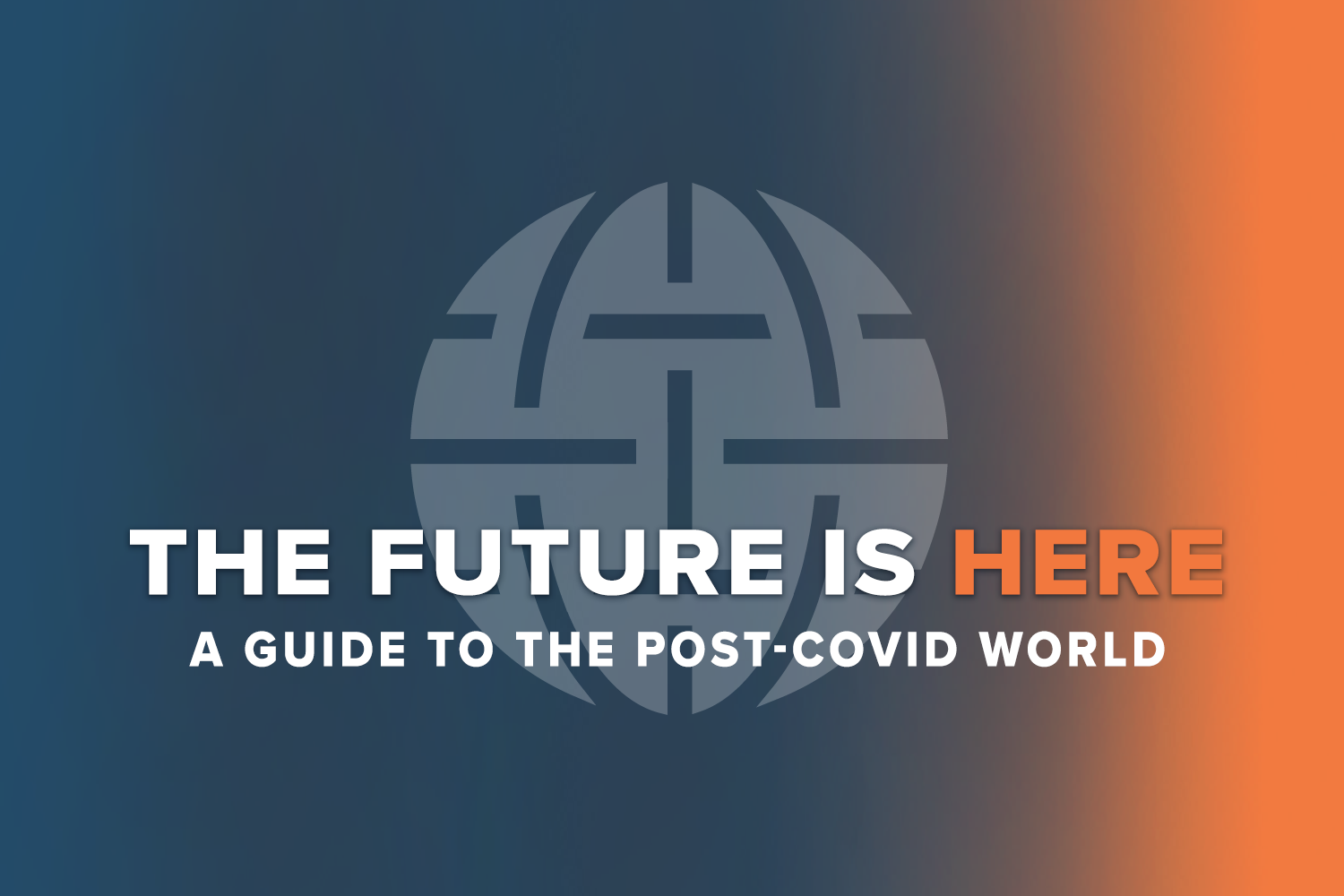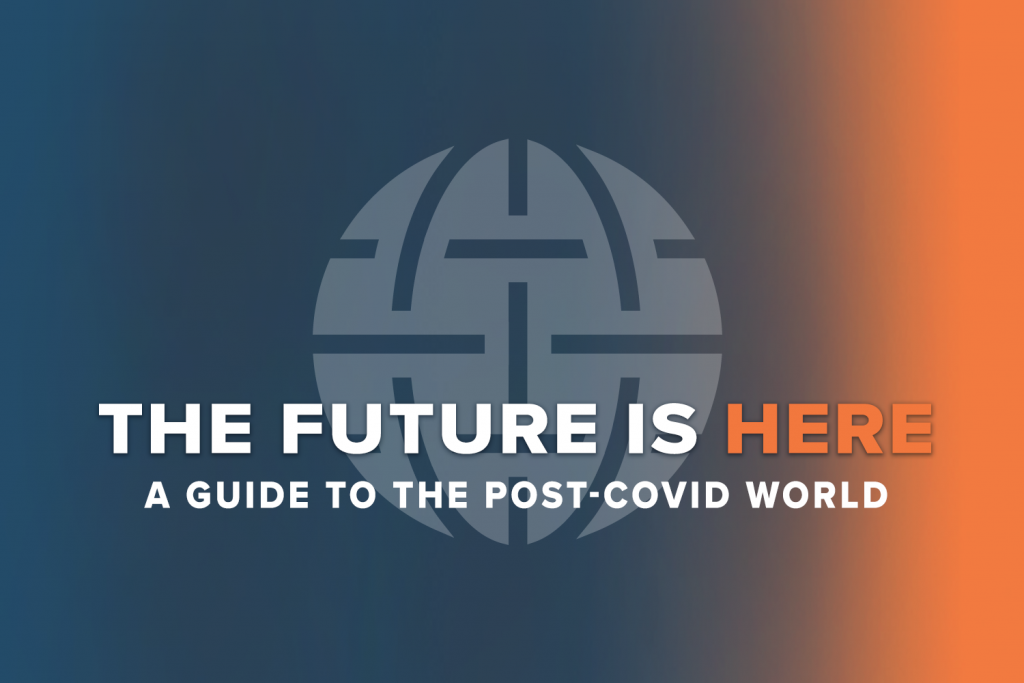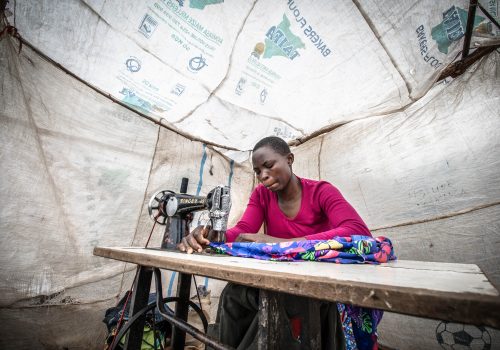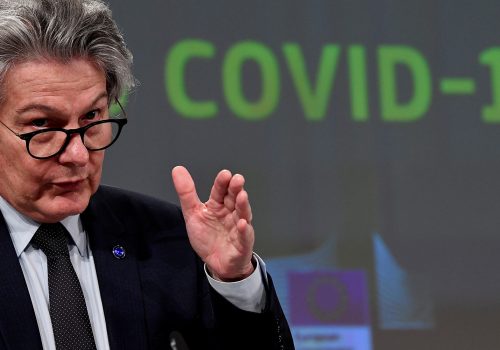The future is here: A guide to the post-COVID world 05/14/2021
Welcome to your guide to where the world is headed during the pandemic era and beyond, from Andrew Marshall. Each week, we’ll bring you the latest and most significant expert insights and international news about how coronavirus is reshaping international affairs. To stay updated each week, sign up to the newsletter here.
Let’s take a spin around the globe, in seven minutes or less.
In top stories this week:
• Good news for the United States: “We’re winning. Be happy.”
• A note from these pediatricians that may change your mind about vaccinating your children (right now).
• Why our economic recovery lies in the hands of small and medium-size businesses.
• But first…
The big story
This week’s key theme: How the world may look back on this moment.
The pandemic is by no means over; many are still dying, and many more will do so. But there is already plenty of thinking underway about the memorials that may come out of the pandemic. British Prime Minister Boris Johnson said on Wednesday that he supports a memorial in London’s St. Paul’s Cathedral, and many other plans are underway around the world.
What might we see as the world considers how to commemorate the pandemic?
- A memorial can be a big permanent stone structure. That’s how we tend to think of memorials, and there are already plans to create some, including this beautiful and evocative structure planned in the waters off Uruguay. It won’t be the only stone memorial dedicated to a pandemic: Perhaps the best-known one dedicated to the plague is a magnificent Baroque column in Vienna, erected after a terrible outbreak in 1679.
- But it can also be ephemeral. That’s how memorials to COVID-19 victims have been so far, like the United Kingdom’s National COVID Memorial Wall which features 150,000 red and pink hearts that were hand-painted by volunteers; or the candles lit on the National Mall in Washington, DC, to accompany the inauguration of President Joe Biden and Vice President Kamala Harris.
- It can be functional. Previous outbursts of disease have driven public authorities to build hospitals and quarantine stations, but also a new canal to supply water to a French city or the Croton aqueduct to New York, both built after a cholera outbreak. A course at the University of Pennsylvania called Remembering Epidemics explores how in many cases, disease rewrites a city’s structure. “People don’t tend to see things like suburbanization, for instance, as related to pandemics, and one of my goals is to get people to start making those connections,” says architectural historian Aaron Wunsch.
- It can be spiritual. One of the earliest memories we have of an epidemic is from the Hittites, an ancient Anatolian group around 1300 BC. The Plague Prayers of Mursilis II are very familiar laments for the dead and pleas to be saved; you can hear the same messages through the centuries.
- It can be activist. The AIDS Memorial Quilt, which commemorates the lives of those who died from HIV/AIDS, is not just about memory, but about a community that came together to act. The National AIDS Memorial describes the quilt as “an epic 54-ton tapestry that includes more than 48,000 panels dedicated to more than 100,000 individuals… a living memorial to a generation lost to AIDS and an important HIV prevention education tool.”
- It can be small and local. The tiny village of Eyam in the United Kingdom’s Peak District holds a Plague Memorial Service on the last Sunday of August. The village shut itself off from the world when the plague struck it in 1665, a selfless act that is still commemorated.
- It can be musical. A lot of music was written around plague outbreaks in Europe, “reminding us of the widespread contemporary belief in the ability of music to promote wholeness and healing,” says Aaron James of the Toronto Oratory. More recently, John Corigliano’s Symphony No. 1 is an elegy for friends lost to HIV/AIDS. “The opening movement, titled ‘Apologue: Of Rage and Remembrance,’ begins with searing strings pummeled by percussion before it finally evaporates into chill air,” says Tom Huizenga of NPR.
- It can be personal. There is a memorial in Rhode Island to a nurse who died of Spanish flu, one of surprisingly few to mark that health catastrophe. Henrietta Isabella Drummond volunteered for the American Red Cross during WWI and died in October 1919. It’s easier, sometimes, to visualize one person versus many.
- It can be about time. We have days when we remember those who died in war, and some countries practice a moment of silence. Might there be a COVID-19 day or moment in our future?
- It can be documentary. The Smithsonian, for example, in its Pandemic Oral History Project has collected short-form interviews with artists, teachers, curators, and administrators to document the crises set out by COVID-19.
- It can be literary. Daniel Defoe’s A Journal of the Plague Year, written in 1665, is just that; and many will doubtless emulate him this year. Perhaps the best example of a book that uses disease as a metaphor for seeing the world more widely, though, is Albert Camus’ novel The Plague. “There’s no question of heroism in all this,” he wrote. “It’s a matter of common decency. That’s an idea which may make some people smile, but the only means of fighting a plague is—common decency.”
Alongside the question of how we memorialize is the question: why? In sadness, anger, hope, fear? “We must envision commemorative spaces to hold grief and accountability,” wrote the nonprofit Monument Lab. “In other words, resist the tempting habit of building memorials that tell single stories of heroism and closure without reckoning with our nation’s traumas, grief, and inequities.” That will be hard, but necessary.
Subscribe to The future is here: A guide to the post-COVID world
Sign up for a weekly roundup of top expert insights and international news about how coronavirus is reshaping international affairs.

The world in brief
Insights from across the planet, in ten bullets or fewer
- India continues to suffer from the ravages of the pandemic worse than any other country. The death toll exceeded 250,000 this week. “Experts still cannot say for sure when numbers will peak and concern is growing about the transmissibility of the variant that is driving infections in India and spreading worldwide,” wrote Reuters. Neighboring countries are closing their borders as they also experience a surge in cases. “It may already be too late,” said Time Magazine. “The B.1.617 variant of the virus, first detected in India, has now been found in 44 countries on every continent except Antarctica—including Nepal, the US, and much of Europe. Scientists say it could be more infectious and better at avoiding humans’ immune systems.”
- On the way to kiddie-size: Vaccines may be ready for some children. The United States moved to make the Pfizer-BioNTech coronavirus vaccine available to young teenagers. An advisory committee to the Centers for Disease Control and Prevention recommended the vaccine for use in children ages twelve to fifteen. “Many parents are eagerly anticipating the availability of vaccines for children, at least in part to speed their return to schools,” noted the New York Times. Some disagree with the step. “As pediatricians, we say please don’t use precious coronavirus vaccines on healthy children,” a group of doctors wrote in the Washington Post. “Many poorer countries have yet to receive a single vaccine shipment. In this context, it is difficult to justify using limited vaccine supplies to immunize young, healthy children at little risk of severe disease from [COVID-19].”
- There’s finally some (real) good news for the United States. COVID-19 deaths in the United States have fallen to their lowest levels in nearly a year at around six hundred per day, reported the Associated Press. “America’s battle against the coronavirus is going great,” said Axios. “For the first time in a long time, nobody needs to cherry-pick some misleading data to make it seem like things are going well, and the good news doesn’t need an endless list of caveats, either. It’s just really good news. We’re winning. Be happy.”
- A report on the World Health Organization’s handling of the pandemic has some sharp criticism—and some recommendations. “The review found a range of problems, from a slow initial reaction to the coronavirus to ‘weak links at every point in the chain of preparedness and response,’” wrote NPR, quoting the report by the Independent Panel for Pandemic Preparedness and Response. The panel said that COVID-19 was “a preventable disaster.” In particular, “The month following the WHO’s declaration was ‘lost’ as countries failed to take appropriate measures to halt the spread of the virus,” reported the BBC.
- A library is wrapping up the pandemic with a little bit of forgiveness. Manchester City Council in England is waiving fines until the end of May to give tardy borrowers time to return those volumes they have been holding onto during lockdown. “Around 90,000 books and other library materials are currently unaccounted for, a third of which were out on loan before the first national lockdown,” said the Manchester Evening News. Some libraries in the United States have dropped late fees altogether during the pandemic, as fines often fall disproportionately on those with lower incomes.
The inside scoop
Insights from the Atlantic Council
Andrew Marshall is the Vice President of Communications for the Atlantic Council. He leads the Council’s media, digital, and editorial efforts, and coordinates the way the Council talks with its key communities.



